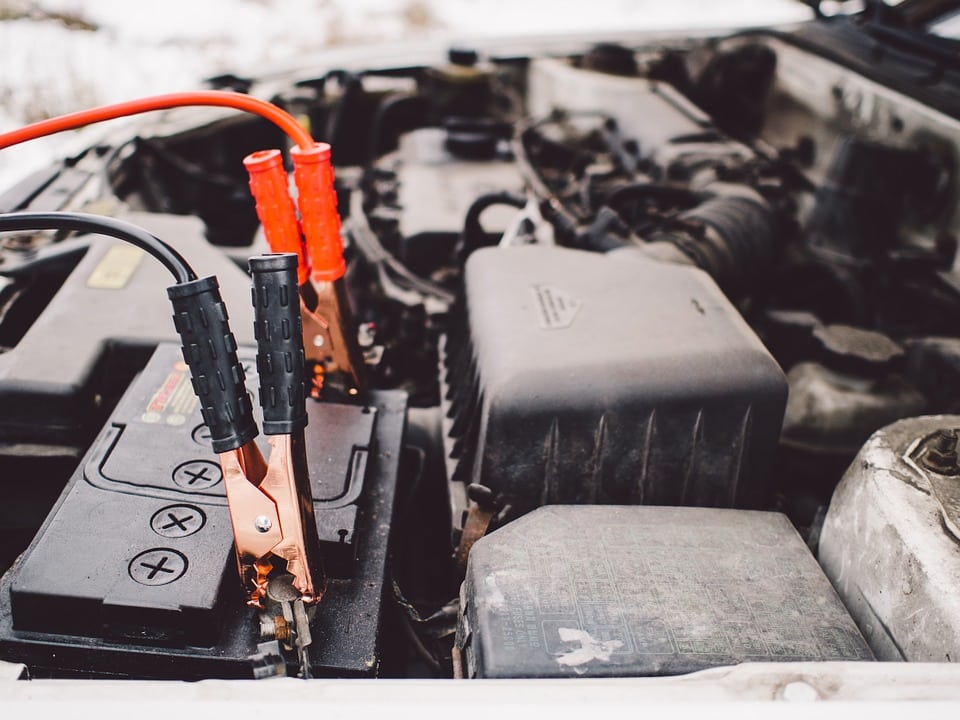
Car batteries have been around for more than a century and the way they are made and used has not changed much over the years. Car batteries became popular around 1920 as vehicles started to become equipped with electric starters. It wasn’t until 1971 that the sealed battery, one that didn’t require a refill, was invented.
Car batteries for classic cars and trucks take special consideration to make sure you have a battery that has enough power to start an engine and also have a long shelf-life. A good battery should last three to four years, yet only about one out of three batteries will make it to year four.
With most classic cars being stored more than they are driven, batteries tend to suffer more from not being used. As a matter of fact, batteries and electrical problems are one of the more common complications plaguing classic cars.
With the proper care, battery life can certainly be extended. It just takes some common sense and a little bit of knowledge.
How do I know which battery is right for my classic car or truck?
The simple answer is look it up on the Internet. Batteries Plus has an online battery search tool for just about any vehicle ever produced, foreign or domestic. Any of the local auto parts stores also have similar search tools available on their websites.
There are some differences in batteries that are for a classic car. All batteries are a variant of the lead acid battery that has been used for 100 years. There are design differences however.
Wet cell (flooded), gel cell, and absorbed glass mat (AGM) are three variations.
- The wet cell comes in two types, one is serviceable, and other is maintenance free. Other than that, they are pretty much the same. Many prefer the serviceable batteries, so they can maintain the electrolyte solution with a hydrometer.
- The gel cell battery is filled with a gel-like electrolyte. Flooded Wet cells need to be kept upright, but real gel cell batteries do not. Gel cells work great for classic cars that are stored a long time.
- AGM batteries use a little different internal design. In an AGM battery, the electrolyte is held in the glass mats, as opposed to freely flooding the plates. These types of batteries certainly outperform and out last traditional wet cell batteries.
Both gel and AGM batteries outperform traditional flooded, wet cell batteries. Their designs allow them to help prevent electrolyte evaporation, meaning it will hold its strength longer, and both are less susceptible to shock & vibrations. They come at a price however. Typically, they will each cost double what an average wet cell will. Also, be aware that gel cell and some AGM batteries may require a special charging rate.
Here is a great video that explains the three types of lead batteries in greater detail if you are looking for the inner details of how each battery works.
How old is my battery now?
When purchasing a battery for your classic car, you should select one with the highest reserve capacity or the highest amp hour rating. Another crucial thing to look at when purchasing a battery from a store is how long it has been sitting on the shelf. If a battery is left to sit too long without a recharge, they will certainly discharge and lose power. In some case the power loss could be permanent making the battery unusable.
Most battery manufactures heat-stamp the date into the battery’s casing, often along the very edge of it. Usually, the code starts with a letter that corresponds with the month… “A” for January through “L” for December. Some manufacturer’s codes omit “I” because it could be mistaken for a 1. For those that do, “J” is used for September (9), “K” becomes October and so on to “M”.
The second character of the code is a number that stands for the year. Therefore, a code starting with “A5” tells us that the battery was made in January 2015. M7 would be December 2017. Here is a quick chart you can reference to date your battery.

There also may be stickers or other dates marked on the battery, but they can mean different things like the last time it was charged. If you want to know the true date, look for the date in the casing.
How should I care for my battery?
Taking care of your battery can extend its life and keep its cranking amps at its best. Make sure the battery is kept clean. A simple solution of baking soda and water will do the trick. Make sure you clean both the post terminals and the battery cables. There are special tools available that help get the job done. There are tons of battery post cleaning tools available on Google.
You may need to refill the battery with water and check the electrolytes if you have a serviceable wet cell battery. If the battery needs water, use clean, distilled water and don’t over fill the cells. After adding water, allow everything to mix and settle for a few hours before checking the electrolyte mixture with a hydrometer.
You may also consider getting a battery with brass terminals rather than standard issue lead battery terminals. Brass terminals will keep a tighter connection and prevent corrosion. It is also a good idea to apply a thin coat of high temperature grease to the terminals before attaching the cables. It helps to stop corrosion as well by preventing oxygen from coming in contact with the terminal.
There is often insulation around a battery. This is there to help protect it from high temperatures. High temps can really reduce the life of a battery. Make sure yours is well protected.
Lastly, we suggest you get an inexpensive battery tester and a battery charger. This way you can keep an eye on the voltage in your classic car’s battery and charge it whenever necessary. A fully charged battery should read around 12.5 volts.
If you are going to store your battery for long periods of time, like throughout a winter, we suggest removing the battery from the vehicle, finding an indoor place off the ground to store it. In a temperature-controlled environment is ideal and be sure to put a trickle charger on it so it keeps the battery’s charge up until it is ready to go back in the car next spring.
Please consider subscribing to our monthly email newsletter to keep up with everything that’s going on at the Wilson Auto Repair garage. Also, follow us on Instagram, @carmechanic, and sign up for a LIVE, one-on-one Zoom consultation with Barry Wilson, our master mechanic, to discuss any challenges you might face with your classic vehicle repair or restoration project. Finally, visit Wilson Auto.com to find the tools we use and recommend to you for your classic car project.
For more videos about classic car restorations, tips, and best practices, subscribe to our YouTube channel.
